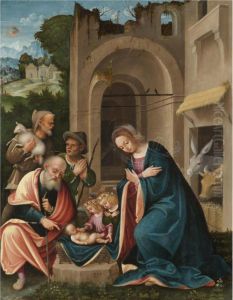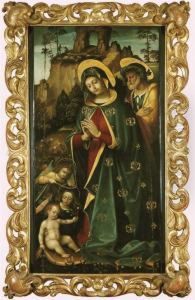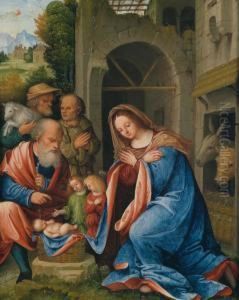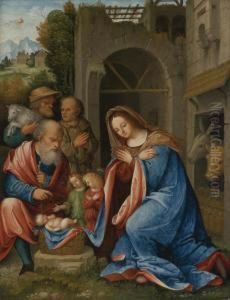Martino Piazza Di Lodi Paintings
Martino Piazza da Lodi, born in 1485 in Lodi, Lombardy, was an Italian painter of the Renaissance period, active mainly in his native region. He was part of the Piazza family, a dynasty of painters that included his brother Alberto Piazza and possibly others, though the exact relationships and lineage are not entirely clear due to the commonality of the surname and the era's scant records. The Piazza family's contribution to the art of their time, particularly in Lombardy, was significant, with their works embodying the transition from the late Gothic style to the more naturalistic approach characteristic of the Renaissance.
Martino's career is documented through a handful of surviving paintings and records indicating his collaborations with other artists, including his brother. These works often feature religious subjects, executed with a keen attention to detail and a vibrant use of color, which became a hallmark of the Piazza family's style. Despite the relatively small number of attributed works, Martino's skill in depicting both the divine and the human with grace and emotion made him a respected figure in the Lombard art scene of the early 16th century.
Not much is known about Martino's training or personal life, as is common with many artists of this period. It is speculated that he, like many Italian painters of the time, may have traveled to study under established masters, absorbing influences from different regions of Italy. His style suggests an awareness of the major artistic movements of his time, including the work of Leonardo da Vinci and other High Renaissance artists, which he adeptly blended with the local Lombard artistic traditions.
Martino Piazza da Lodi's contribution to the Renaissance art movement, particularly in Lombardy, was his ability to infuse his works with a sense of humanity and divine presence, making religious narratives accessible and emotionally resonant to viewers of his time. His death in 1523 marked the end of a relatively brief but impactful career, leaving behind a legacy that would influence Lombard painting for generations. Despite the scarcity of surviving works and records, Martino Piazza da Lodi remains a figure of interest for art historians studying the complexities and regional nuances of Italian Renaissance art.



